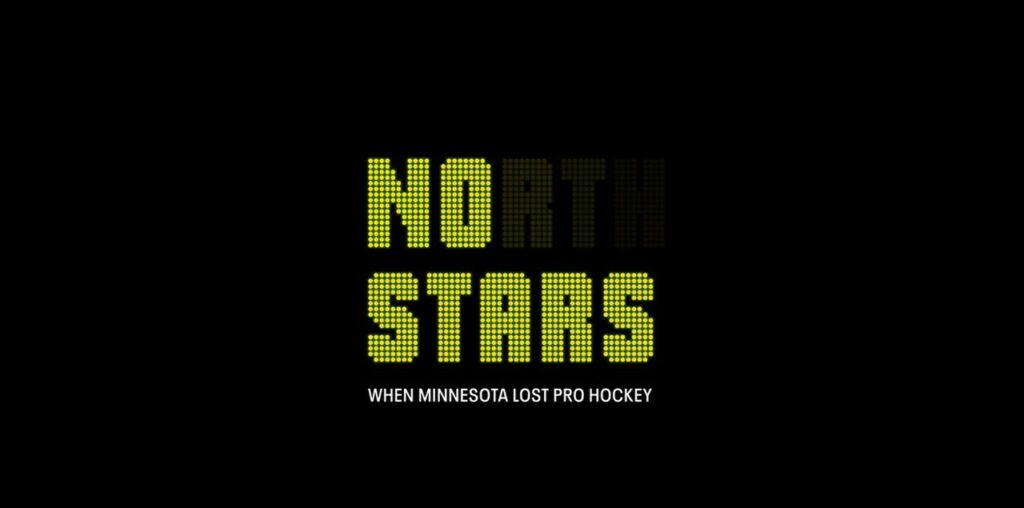
The Met: Home of the North Stars
“It was like going to a cathedral.” FOX 9 recently interviewed former team executives and government officials about disputes over stadium funding as part of a documentary about the North Stars leaving Minnesota.
ST. PAUL, Minn. (FOX 9) – Now a surface parking lot, there is little to remind fans of the coliseum-like stadium that was home to the Minnesota North Stars. While former players, team executives and fans have fond memories of The Met Center, the dated venue played a pivotal role in the future of professional hockey in Minnesota.
The backstory
Built next to Metropolitan Stadium in 1967, the Metropolitan Center helped turn Bloomington into a destination for Twins, Vikings and North Stars fans.
The stadium, which was known for its stone columns on the outside and a collage of green, yellow, white and black seats on the inside, quickly became a fan-favorite.
“For me, being a little kid, it was like going to a cathedral,” said FOX 9 Sports Director Jim Rich.
FOX 9 recently talked to former players, team executives and fans about the Met Center as part of a documentary about the North Stars leaving Minnesota.
While the stadium held less than 16,000 fans, players say the intimate setting created a distinct home-ice advantage.
“It got loud,” Mike Modano, who played at The Met from 1988-1993, said in a recent interview for the documentary.
Jack Carlson, who played there in the late 1970s and early 1980s, said players could tune out the crowd in other stadiums across the league but “You could not tune it out at the Met Center.”
The players also said the stadium had the best ice in the league.
“Basically, it means when the players skated on the ice, they felt like it was smooth and when passing the puck, the puck didn’t bounce,” said Jack Larson, the former Director of the Met Center.
Sweet but not suite
The color pattern of the seats not only added a quirky aesthetic, but also served a practical purpose during down years for the North Stars.
“When you looked at a game on television, even if there weren’t many people there, it looked like it was probably a decent crowd because you couldn’t tell what was seats and what weren’t seats,” said Kevin Allenspach, who recently published a book about the North Stars run to the Stanley Cup Finals in 1991.
By the early 90s, optical illusions couldn’t mask the stadium’s glaring deficiencies.
“We didn’t have enough seats or suites,” said Lou Nanne, a former North Stars player and executive.
“There were some at one end,” Allenspach said. “But not nearly as many as what were going to be required for a competitive NHL team by the late 80s and early 90s.”
Off target
Bill Lester, the former executive director of the Minnesota Sports Facilities Commission, acknowledged he wanted the team to move into the Target Center which had opened in downtown Minneapolis in 1990 and became home to the Minnesota Timberwolves.
“You needed a place to play where you could leverage the revenue streams,” Lester said in an interview for the North Stars documentary. “From a personal perspective, it’s very good policy to put them in the downtown area.”
By that time, the Twins and Vikings had already relocated to the Metrodome in Minneapolis.
“The Timberwolves were there, the last missing piece was the North Stars,” Rich said.
But Norm Green, the North Stars owner, resisted a move downtown because he didn’t want to share advertising and concession revenues with another team, according to former North Star executives.
“If we go play at the Target Center, our revenue is going to get cut again,” Nanne said.
Instead, Green wanted help renovating Met Center.
Met and the mall
“I think at the end of the day, Norm was keen on having his own building,” said John Blackshaw, former General Counsel for the North Stars.
Green requested $15 million to help fund plans to add suites and connect the stadium to the new Mall of America.
“There was a lot of talk with the City of Bloomington to…sort of use Met Center property differently,” Blackshaw said.
But Tom Bernhardson, the former city manager, said those plans never fully developed.
“We never got to a point of ever discussing any dollars,” said Bernhardson.
Jack Larson, the director of Met Center, said the plan to connect the stadium to the Mall of America was a really smart idea, but Green could not convince the Sports Facilities Commission to invest the money.
“I just don’t think the commission and Norm saw eye to eye,” Larson said.
Rumors soon started swirling that Green was negotiating with Dallas about the possibility of relocating the team to Texas.
“Nobody saw Dallas as an alternative,” Rich said.
In March 1993, Green sealed the deal when he handed jerseys to the Dallas City Council.
The Met Center was demolished the following year.
“Frankly, the best thing that happened to Bloomington was when the stadium left,” Bernhardson said 30 years later.
New stadium. Old debate.
But another city quickly started angling to bring professional hockey back to Minnesota.
St. Paul Mayor Norm Coleman convinced the National Hockey League to put an expansion team downtown. First, he had to convince city and state leaders to invest public money to build a new stadium downtown.
READ MORE: Minnesota Wild to wear North Stars colors 15 times this season. Will the logo ever return?
The Xcel Energy Center opened in 2000 and is still home to the Minnesota Wild.
Like the Met Center decades earlier, it quickly became a fan favorite but is now in need of improvements, according to the team’s majority owner.
“NO STARS: When Minnesota Lost Pro Hockey” premiers Nov 14 on FOX 9 and FOX LOCAL.

